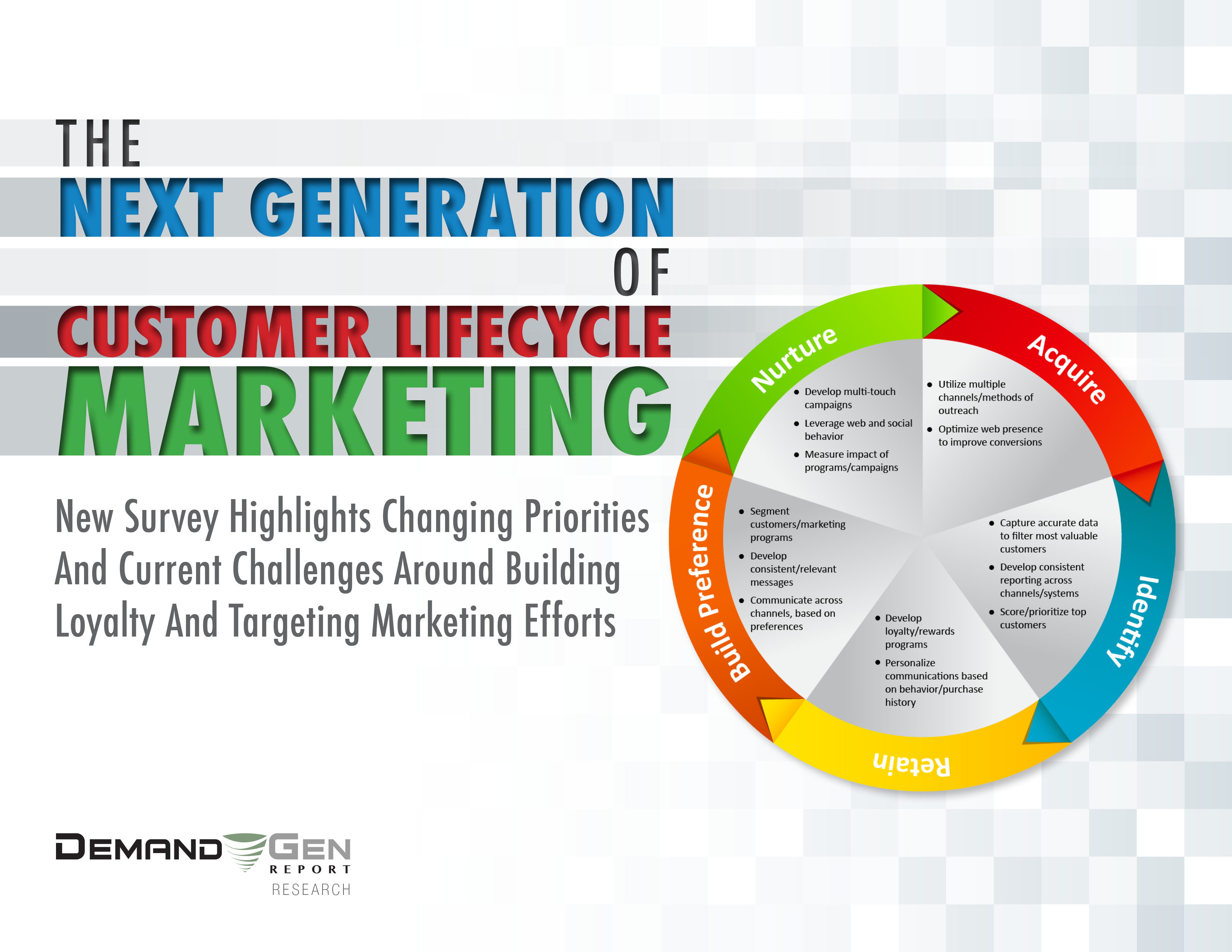Just a few years ago, marketers were trying to grab as many new customers as they could. While no one is turning away new business today, the focus is shifting to customer retention and building loyalty, according to speakers at the Automating Customer Lifecycle Management event, which was recently held in New York and sponsored by Eloqua.
Andrew Gaffney, Editor of Demand Gen Report, kicked off the meeting with a discussion of the recent report, The Next Generation Of Customer Lifecycle Marketing. “Two to three years ago, marketers would have said that lead generation was their top priority,” he said. “Now they are focused on improving loyalty and doing better job of selling additional products and services to their existing customers.”
Citing several key statistics from the study, he noted that 68% of respondents, which included B2B and B2C marketers, reported that identifying their most loyal/valuable customers, while 52% said acquiring new customers was a top priority.
{loadposition SPIAA} Ken Wincko, Senior Director of Marketing for Dun & Bradstreet, concurred, adding that customer retention is a primary focus of the company’s marketing efforts. He discussed how Dun & Bradstreet’s marketing team is transforming the customer experience using a combination of technology and the latest loyalty and relationship marketing best practices.
“What we have discovered is that by focusing on customer retention, we are able to free up time for prospecting and cross selling,” he said.
He explained that Dun & Bradstreet has identified a number of ways to improve and automate lead nurturing to boost the retention rates of customers who purchased subscriptions to its data services. “We developed a risk model and found that if we didn’t touch base with the customer in the first three months, they were at risk of not renewing,” Wincko said. “In addition, we found that 90 days and 45 days before renewal were critical touch points in the relationship.”
Sending The Right Message To The Right Audience
Putting the right content in front of users at the appropriate time has been key to the company’s success, he said. “Content is so critical. It is not just about the quantity, but the timing and the quality of the content.”
According to Wincko, the company’s Hoover’s division has gone beyond the traditional welcome email to nurturing its new customers. “We send them reference material, white papers, videos and access to competitive research that they were not using before,” he explained. “Once we get them engaged, the message is ‘now let’s show you how we can help in other ways.’” They also offer a loyalty program, which he said customers can use to upgrade their service or purchase additional services.
The company has been using Eloqua since 2009, he said. In 2011, the company began using an automated customer lifecycle management strategy.
D&B has experienced significant financial benefits from this approach, including more than $400,000 in productivity savings and more than $12 million in incremental revenue annually. Another key metric of success is that customer attendance at training webinars went from 10% to 90%.
He also noted that it is important to tailor the content to the audience. “If you’re communicating with executives, you have to demonstrate the high-level benefits,” he said. “When you are talking to a mid-level manager, the message has to be focused on how they can do their job better and more easily.”
Guy Nirpaz, Co-Founder and CEO of Totango, stressed the importance of aligning the customers actions with the messages being sent, and he provided several examples of how marketers can benefit by capturing information about a customer’s behavior. “If you have a number of doctors at a hospital researching MRI machines, it is a good indication that they are looking to purchase,” he said. “In financial services, if you have a customer that has not used their bill paying service for a few months, they could be at risk for leaving.”
In the case of a customer who is at risk for leaving, Nirpaz said an email about a new feature or a percentage off for trying a new service could be even more effective than a standard “please come back” message.
Not Just Once And Done
Marketers should be consistently measuring their campaigns and making adjustments to their campaigns, said Brian Wetterling, VP of Harte-Hanks/Mason Zimbler, He encouraged marketers to use what he called experiential web design.
“There is technology that follows the customer’s mouse to know where they went on a particular page and how far they scrolled down,” he said, providing a heat map that could be used to adjust the placement of forms, images and content on the page. “By experimenting,” he added, “we are able to increase the number of by 91%. We also saw page duration increase by 20%.”
He cautioned marketers to be judicious in the amount of data they collect. “You don’t need to eat the elephant in one bite,” he said, adding that some people abandon forms when they feel they are being asked to provide too much information on the first contact with the company.







